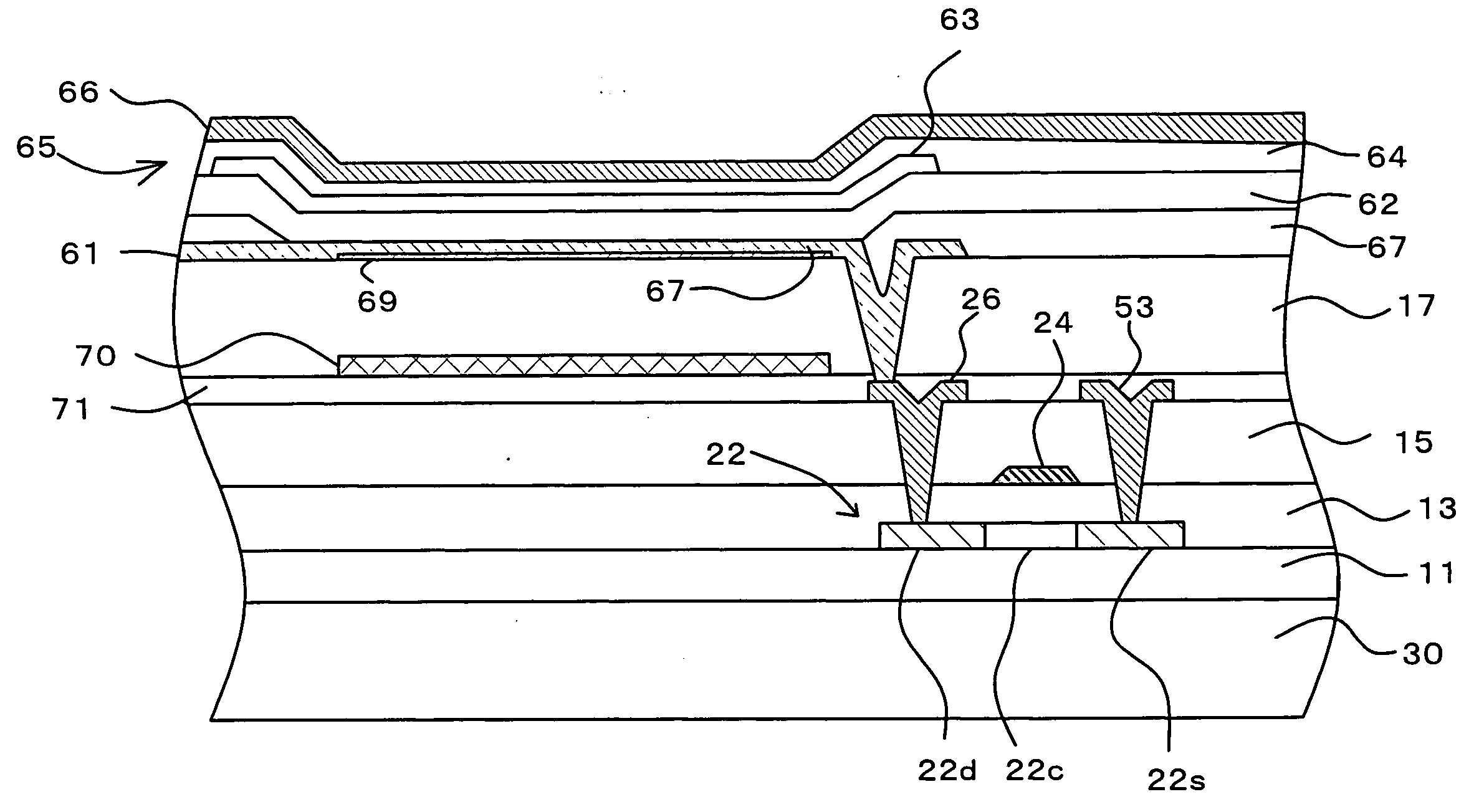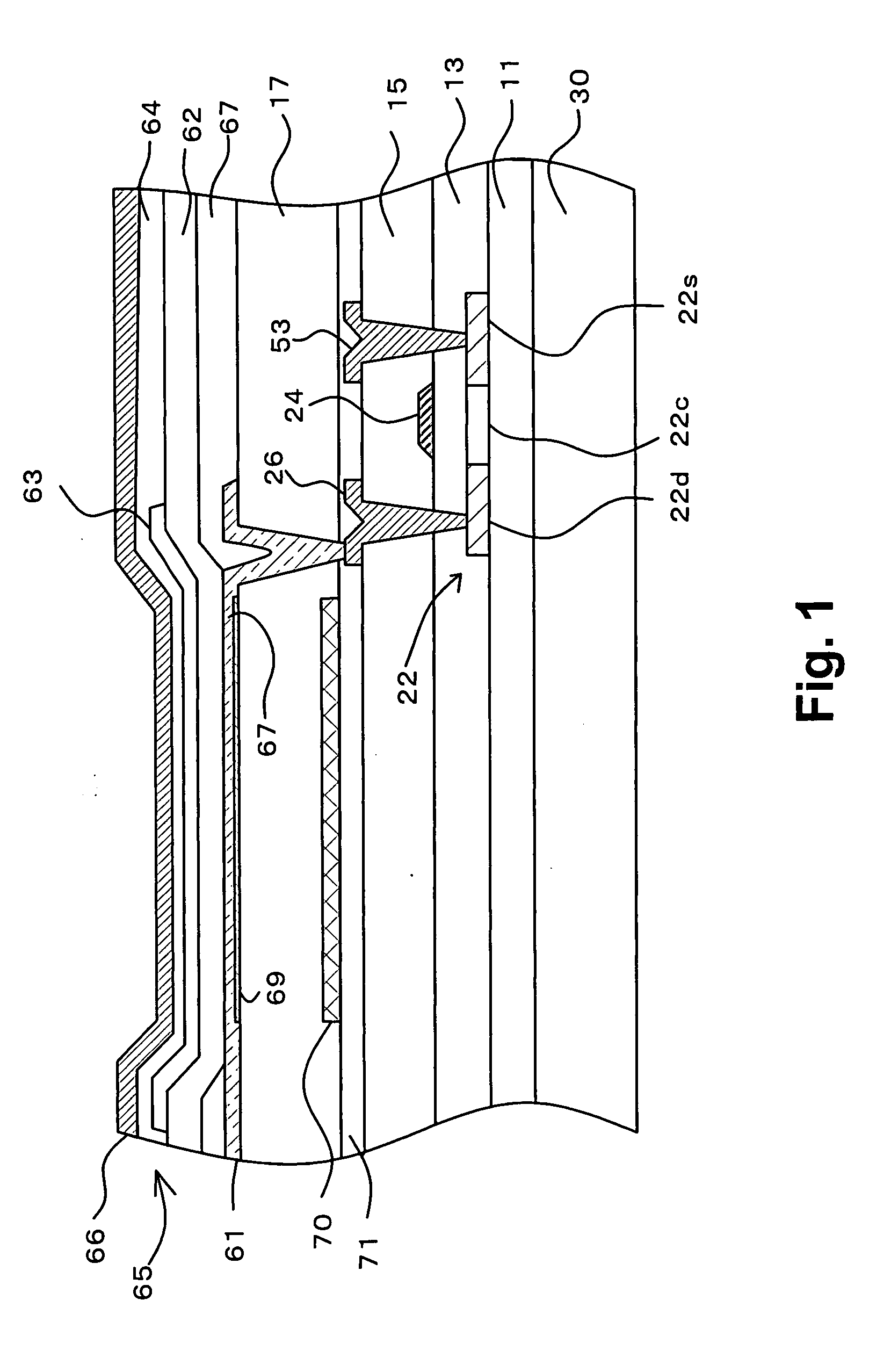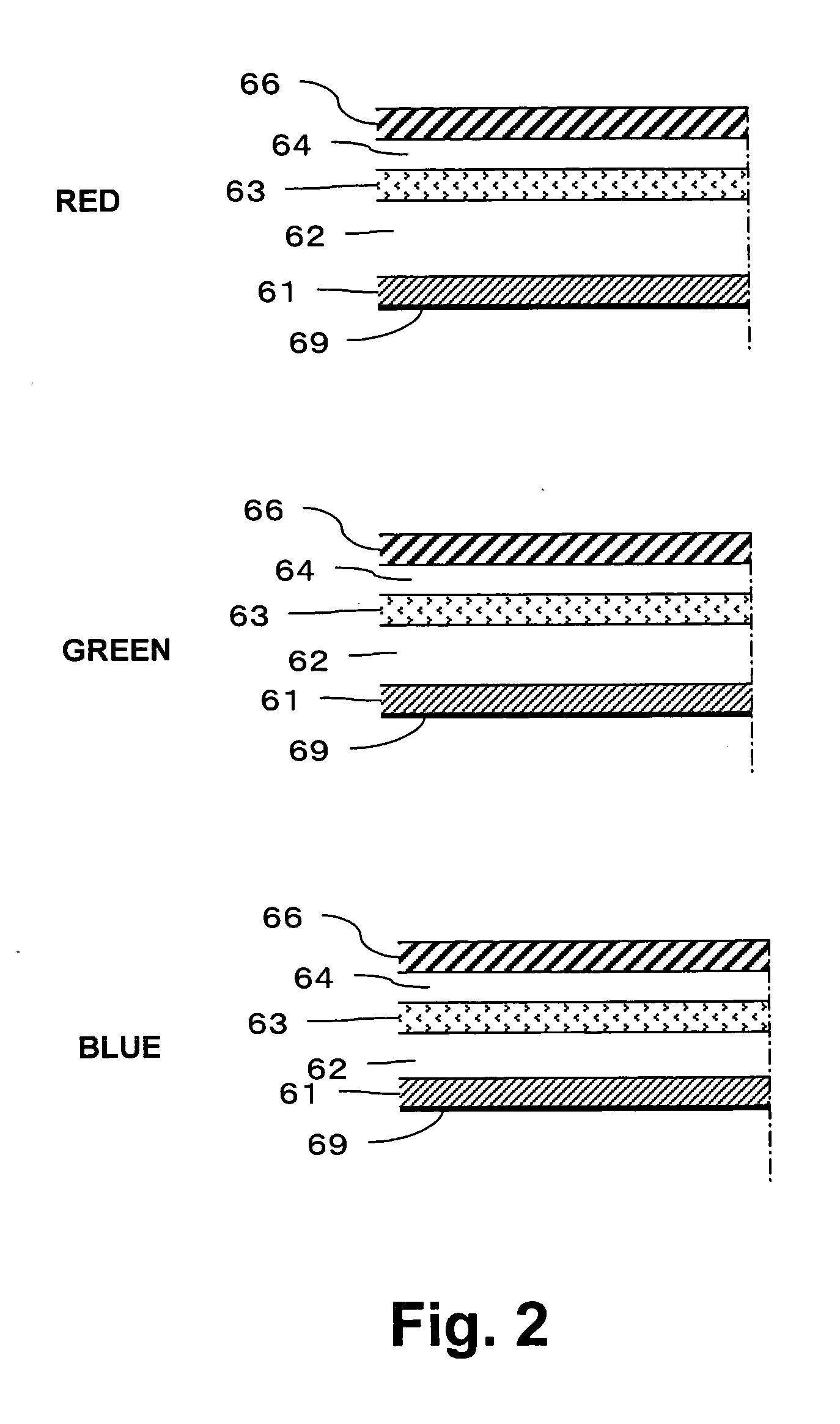Organic EL element and organic EL panel
a technology of organic el elements and organic el panels, applied in the direction of electroluminescent light sources, electric discharge lamps, incensed envelopes/vessels, etc., can solve the problems of unintended colors detected, difficult to achieve sufficient emissivity efficiency for each color, and difficult manufacturing process of panels, so as to reduce the required precision concerning the thickness of the el element portion constituting the microresonator, the effect of reducing the dependence on the viewing angl
- Summary
- Abstract
- Description
- Claims
- Application Information
AI Technical Summary
Benefits of technology
Problems solved by technology
Method used
Image
Examples
Embodiment Construction
[0022] Preferred embodiments of the present invention will next be described referring to the drawings.
[0023]FIG. 1 is a cross-sectional view showing a configuration of a light-emitting region and a drive TFT (thin film transistor) within one pixel. It should be noted that each pixel actually includes a plurality of TFTs. The drive TFT is the TFT which controls a current supplied from a power line to an organic EL element within the pixel. On a glass substrate 30, a buffer layer 11 composed of a lamination of an SiN layer and an SiO2 layer is formed over the entire surface. Further on top, an active layer 22 made of polysilicon is disposed in predetermined areas (where TFTs are to be created).
[0024] Covering the active layer 22 and the buffer layer 11, a gate insulation film 13 is formed over the entire surface. The gate insulation film 13 may be formed by laminating an SiO2 layer and an SiN layer. On top of the gate insulation film 13 at a position above a channel region 22c, a g...
PUM
 Login to View More
Login to View More Abstract
Description
Claims
Application Information
 Login to View More
Login to View More - R&D
- Intellectual Property
- Life Sciences
- Materials
- Tech Scout
- Unparalleled Data Quality
- Higher Quality Content
- 60% Fewer Hallucinations
Browse by: Latest US Patents, China's latest patents, Technical Efficacy Thesaurus, Application Domain, Technology Topic, Popular Technical Reports.
© 2025 PatSnap. All rights reserved.Legal|Privacy policy|Modern Slavery Act Transparency Statement|Sitemap|About US| Contact US: help@patsnap.com



